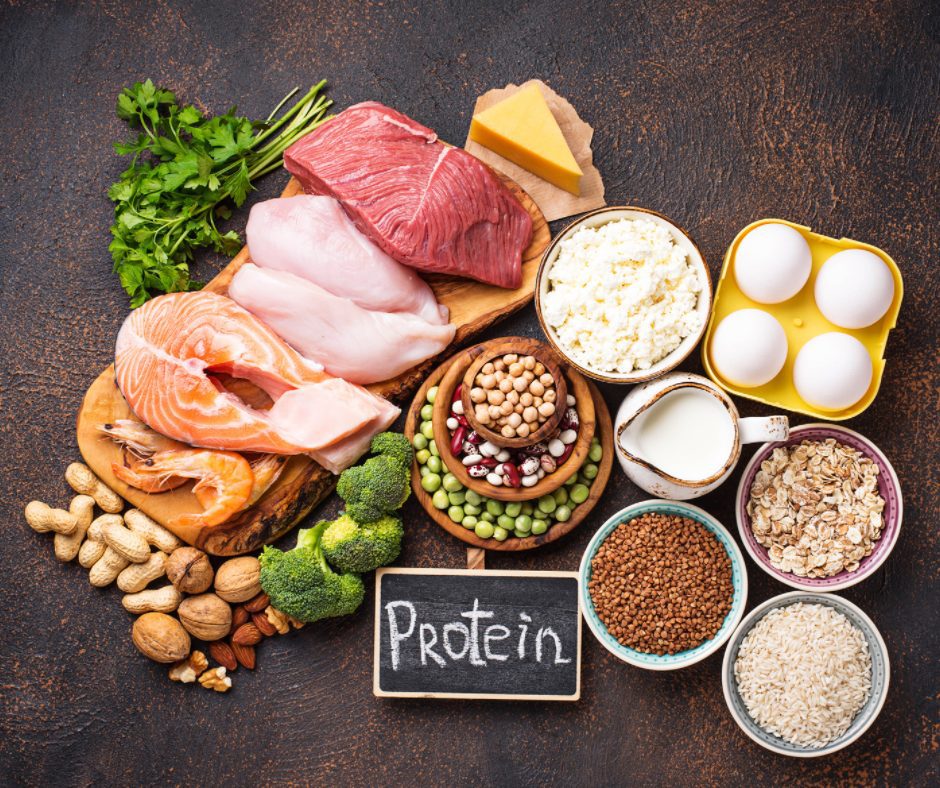
The best online fitness resource you'll ever need. We filter out the BS to ensure you meet your health and fitness goals!

The best online fitness resource you'll ever need. We filter out the BS to ensure you meet your health and fitness goals!

The common goal for most people on a body-building journey is to gain as much muscle as possible, whilst also gaining as little fat as possible. Some even shoot for the golden goose of bodybuilding, gaining muscle whilst simultaneously losing fat.

Whatever it is you’re aiming for, in particular, keeping that body fat percentage as low as possible is probably up there. This is why you are probably looking at the leanest bulk you can get away with.
Calculating your macros for lean bulk is not too dissimilar to calculate your macros for a cut.
But just so we’re on the same page let’s dive into a few key terms.
You’ve probably heard of many different kinds of bulks.
Clean. Dirty. Lean. Perma.
However, no matter how you look at them, they all end up serving the same purpose. And in actual fact, when calories are equated, they give identical results.
If you’re bulking, you’re intentionally aiming to put on mass. To do this, you calculate your maintenance calories using a calorie calculator, slap on 500 calories to that number, and start eating. Any calories consumed above maintenance tend to get stored as body fat. If you’re intentionally putting yourself in a calorie surplus, you’re bulking. Plain and simple.
The difference between the types of bulk mentioned above is whether or not it’s a large surplus, more than 300 calories above maintenance, or exclusively healthy food.
A clean bulk is essentially eating in your surplus, but only allowing ‘healthy’ foods as part of your diet. Perhaps you plan on sticking to the classic bodybuilder diet of chicken, rice, and broccoli. Or you’re simply avoiding all processed foods. Whatever you’re doing, you’re hitting your calorie and protein target and feeling smug that your meals are perfectly balanced and not a single spoonful of added sugar passes your lips.
The thing is, no matter how clean your diet is if you’re eating in a calorie surplus you’re still putting on body fat. If your calories are matched with your dirty bulking peers the results will pretty be the same. Just you’ll feel less greasy.
A dirty bulk is a similar process. A high protein calorie surplus. The difference being, as you might already guess, is that your meals are less strict. You allow yourself to eat fast food. In fact, it’s probably easier to hit your calorie targets because you’re eating processed foods. You’ll probably find it easier to do so than your clean eating peers.
The risk, however, other than the health risks of highly processed foods, is that you’ll more often or not overshoot your calorie target due to the calorically dense nature of your diet. This isn’t necessarily an issue, but you may end up with more fat to cut off because of it.
A lean bulk is different. The aim with a ‘lean’ bulk is to put on less body fat. With a lean bulk, the trick is to find that sweet spot just above maintenance that gives your body enough fuel to build muscle, without leaving you much, if anything, to cut afterward.

It’s widely believed if otherwise disputed by most, that 1lb of body fat is about 3500 calories. When it comes to planning a bulk, it’s often agreed that 500 calories extra a day is conservative enough to allow for muscle development with minimal fat gain. This equates to about 1lb of fat gained per week. Any more, and you’ll likely reach a point of wanting to cut way before you’ve gained a worthy amount of muscle during your bulking cycle.
A lean bulk aims for a surplus that’s even less than 500 calories a day.
300 calories appear to be the current sweet spot. Where your maintenance calories are less a single figure, and more a ‘window’, 300 calories seems to be the safe spot to keep you out of maintenance, fuel the body enough for muscle growth, and keep the amount of body fat you will gain at an absolute minimum.
With your lean bulk calories dialed in, you should end up bulking at a much slower rate but with your muscle development growing faster than any body fat.
The macro split, much like many macro splits across different diets, is fairly flexible.
Protein is the macro you will want to focus on the most, however. The entire body is made up of proteins and it is the essential building block of muscles. But it can also be oxidized and serve as a fuel source for the body in the absence of carbohydrates and fats.
Being so close to maintenance calories you’ll likely want to consume more protein than you typically would do on a larger bulk. The research currently tells us that your daily protein target should be between 1.6gs to 2.2gs of protein per kg of body weight. For a lean bulk, you will likely want to consume closer to the ceiling at about 2 or 2.2gs per kg per day to ensure you’re giving the body more than enough protein to build muscle with. So, if you weigh 80kgs you’ll want a minimum of 160gs of protein per day.
Muscle development and anabolism, in general, are very energy-demanding and require regular protein feedings. Being so close to maintenance, even risking dipping into a deficit every once in a while, you want to ensure you’re feeding yourself enough protein regularly enough should avoid any unwanted muscle catabolism.
When it comes to carbs and fats, that purely depends on your own personal eating habits.
Carbohydrates are widely recognized as the body’s preferred fuel source simply because it’s so easy for them to be converted into much-needed ATP – the body’s energy currency. However, it’s not an absolute necessity and the body is fine with converting fat or other sources into glycogen via a process call gluconeogenesis.
Which leaves the split of carbs and fats entirely up to you.
If you’re following a ketogenic diet, that decision is typically already made for you. You’ll end up eating around 50gs of carbs a day. At which point you’ll fill the rest of your calories with fats.
If you’re not on keto, you’re free to split the carbs and fats however you like. The 40/40/20 diet may well be a good framework for you if you want to leave the macro split decision-making up to someone else. 40/40/20 divides your macros into 40% protein, 40% carbs, and 20% fats.
It may be controversial to hear that carbohydrates are not majorly important when it comes to lean bulk. There is often a lot of talk about post-workout carbohydrate ingestion to stimulate muscle protein synthesis. However, it’s important to note that the research is still on the research if mostly inconclusive. Outside of replenishing your glycogen stores, carbohydrate ingestion doesn’t appear to be necessary for maximum muscle hypertrophy if your daily protein target is being met.

If you’re not already familiar with how to calculate your calories and macros for lean bulk, here’s some helpful information:
There are a number of calculators you can use to figure out your maintenance calories. A popular one being this TDEE Calculator
This will tell you what your maintenance calories are based on your age, height, weight, and activity levels.
Once you have that number, add 300 calories. This should be enough to keep you out of maintenance but not so much that you will put on too much body fat throughout your lean bulk cycle.
So, if the calculator gives you maintenance of 2000 calories. Your lean bulk target will be 2300 calories a day.
From there, you want to figure out your protein calories.
As mentioned before, you want to aim for the higher end of the daily protein intake recommendations. Let’s use 2gs per kg per day as an example.
If you’re an 80kg male your target will then be 160gs of protein per day.
Protein has 4 calories per gram. Therefore 160gs of protein a day equals 640 calories from protein.
That leaves us with 1660 calories to play around with.
Carbs come to 4 calories per gram and fat provides 9 calories per gram.
Assuming you do decide to lean bulk on a keto diet, and therefore eating 50gs of protein a day, that’s only 200 calories from carbohydrates a day (50gs x 4 calories). That leaves you with 1460 calories left to fill with fats. As fats are 9 calories per gram that means you will be eating 160gs of fats a day.
That completes your lean bulking diet.
160gs of protein
50gs of carbs
160gs of fats
2300 calories total.
Whatever you please.
With some advisories.
Your food choices are entirely up to you. There are no magic bullets for bulking and cutting when it comes to food choices. If your calories and macro splits are being met then what makes those up is your call.
It’s a good idea, however, to make sure that your meals are balanced. You don’t want to risk any harmful nutrient deficiencies. So make sure you’re eating lean proteins, enough carbs if those are your choice,s and some vegetables if you can.
Whole foods are preferable to make sure you get those all-important micronutrients in, but if you need to supplement then feel free to do so if it helps you reach your goals.
If you are allowing yourself to eat carbs and occasional processed food, make sure it’s not too sugary. Sugar and processed foods are made to be hyper-palatable. Meaning they will make you want to eat more of the same. The idea with a lean bulk is to not eat above your calorie total. So try to not put yourself in a situation where you may overindulge.

Nutrient timing for lean bulks is a controversial topic.
Around the gym floors, you tend to hear about anabolic windows and such. But it’s important to note that these aren’t hard and fast rules.
Again, if your calories and macros are being met, not a lot else matters in the day. However, for muscle protein synthesis, the process which tells your body to develop muscles post-workout, to be super effective you need to regularly ingest protein throughout the day.
It’s a good idea, in that instance, to spread your meals out in the day. This is especially important during a lean bulk or a cutting cycle. You don’t want to find yourself in a situation where you are more hungry than normal and then risking overshooting your calories for that day due to a hunger-induced binge. You want to control your calorie intake.
So try and spread out your calories and macros across 3 or 4 meals. If you know you have a heavy gym session ahead of you, plan a meal or snack around that so you don’t binge post-workout.
Other than that, you’re all good for timing.
Resistance training is arguably the most important component for a lean bulk. Muscle doesn’t develop simply because you’re feeding it additional protein and calories. Without the resistance training component, you will simply end up putting on body fat and not develop any lean muscle mass.
Ensure your training is challenging. Muscles grow and develop in response to new stimuli. If you don’t challenge your muscles, they will not grow.
There are many resistance training programs out there with varying splits and schedules. A 4-day program will be just as effective as a 6-day program so long as the volume is equated. Make sure your program is tried and tested, isn’t just a recommendation from a stranger at the gym, and fits your schedule. And, more importantly, fits your goals and is fun. The program you’ll stick to the most will be enjoyable and specific to your goals.
What separates a lean bulk from all the other bulks is keeping you just out of maintenance enough to ensure constant growth, enough fuel for muscle development, but minimal fat gain.
It’s ideal to ensure you’re consuming enough protein, about 2gs per kg per day, and resistance training consistently to ensure your body has enough stimulus to adapt to. Outside of that, however, your macro split and diet are entirely up to you.
Body fat is just stored energy. Make sure you don’t give your body too much to store and you should simply lean gains all the way.